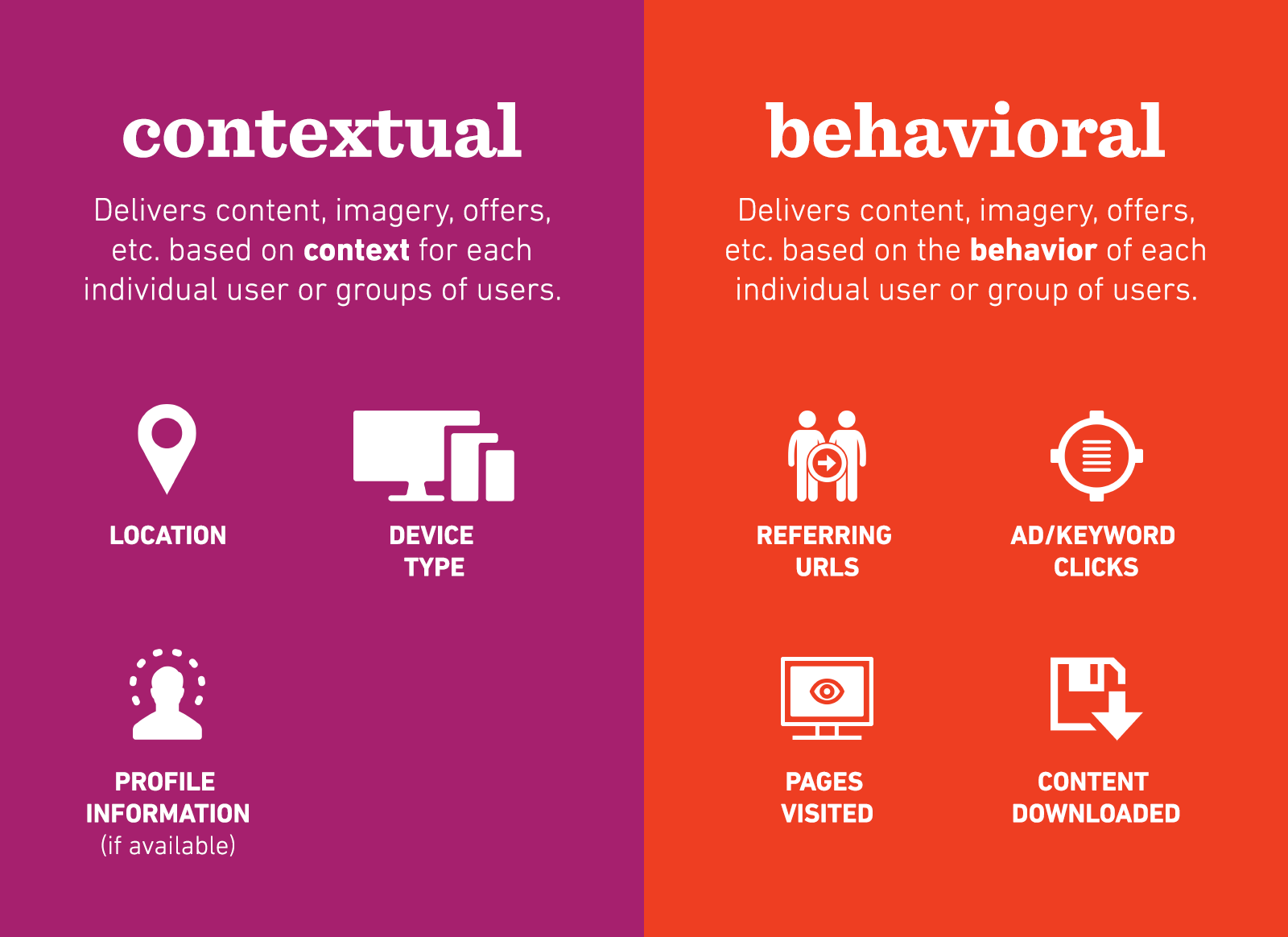By 2026, experts estimate that the total global contextual advertising spend will reach $335.1 billion annually. But why are so many people investing in contextual advertising? What even is this type of advertising, and how does it differ from other advertising strategies like behavioural advertising?
Today we will dive into everything you need to know about contextual display ads, including how they work, why they are important, and the best ways to use them.
What Is Contextual Advertising?
Contextual advertising is a type of online advertising that involves placing specific ads on a web page relevant to its content. For example, if you were visiting the “Style” section of the New York Times website, you would probably find ads for clothing, shoes, or accessory brands.
Contextual advertising takes place, with the help of contextual targeting, on an ad network such as Google ads. It allows you to target specific audience segments, based on parameters like keywords and website topics while providing optimised ad content for each segment.
Contextual vs Behavioural Advertising
Before we delve deeper into contextual advertising, we must all get on the same page as to what it actually is. While contextual and behavioural are often confused, they’re definitely not the same.

Contextual advertising is based on the audience’s environment and the page where the ad is displayed. It utilises contextual targeting, of specific websites and keywords, to present ads to groups of consumers whose interests make them more likely to be receptive.
Behavioural advertising is based on the audience’s behaviour or the actions the user takes before reaching a webpage. This includes activity on social media, clicking on links or reading articles. Through behavioural targeting, ads can be displayed to individual consumers who are likely to be interested.
Put simply, contextual advertising has to do with the content of a webpage, and behavioural advertising has to do with past internet behaviours.
Benefits of Contextual Display Ads
The contextual advertising market is growing rapidly for a wide range of reasons. Below we will explore just a few of the key benefits brands are experiencing by using contextual display ads:
-
Easy and Affordable
Many brands find that contextual targeting is easier and more cost-effective than other options, like behavioural advertising. One reason is that behavioural advertising requires a ton of data. To collect and analyse this information, you may need to invest money into expensive software and time sorting through the data.
Because contextual advertising is less personal than behavioural advertising, it’s often less expensive. Contextual targeting also allows you to reach a potentially more receptive and relevant audience which can lead to a greater return on your investment.
-
Increased Relevance
The average person sees thousands of ads daily, often without even realising it. Many people say they don’t even notice ads anymore because they’ve become so good at tuning them out while using the internet.
Ad fatigue is real, and internet users are particularly wary of highly targeted behavioural ads. The good thing about contextual advertising is that it can help you combat ad fatigue by providing highly relevant content without being so personalised that your customers start to feel 'watched'.
Because contextual targeting focuses on the content of a webpage, you can assume that people visiting that page are at least somewhat interested in what you’re selling. By presenting people with the right content at the right time, you can increase the likelihood of your ad being clicked and the chance of a conversion.
-
Fewer Privacy Concerns
Since the implementation of the General Data Protection Regulation (GDPR), brands now require visitors to consent to use cookies for data collection. This regulation has significantly hindered brands' reliance on behavioural advertising to promote their products or services.
Contextual targeting is less personal and not bound to the same user privacy regulations as behavioural advertising. It’s safer for advertisers to use this strategy without worrying about getting in trouble for using their customer's personal information.
-
Easier Reputation Management
Behavioural advertisers don’t just have to worry about protecting themselves from a legal standpoint. They must also consider their reputation. It’s not uncommon for brands’ advertisements to appear in dubious environments (such as on web pages for adult or extremist content) because of users’ previous online behaviours. This issue can be particularly troubling if you don’t want your brand associated with questionable internet content.
When you rely on contextual display ads, you get more control over where your ads show up. You get to specify the keywords, topics, and subtopics, which reduces the likelihood that your ads will appear in an undesirable location.
-
Appear Less “Creepy” to the Consumer
These days, lots of people find highly personalised ads based on their online activity to be “creepy”. They don’t like the idea of being followed online and may be turned off by brands that rely on behavioural targetting that presents ads that suggest the advertiser knows way too much about them.
Contextual advertisements can make more sense to the consumer. They will understand why they might get an ad for accounting software when reading a blog's business or financial section. Because contextual ads feel more natural, people are less likely to be turned off by them.
Tips for Implementing Contextual Display
So, now you know some of the main benefits contextual display ads offer, but what about putting them into practice? Don't worry, I've got you covered for that too!
Here are eight tips for running a successful Contextual ad campaign:
1. Divide Your Ad Campaigns
Resist the urge to put all your advertising eggs in one basket. Instead, create separate ad groups for each different audience segment.
When you avoid using the same ad groups across the board, you can still reach a wide audience and get your business’s products or services in front of tons of potential customers, but with much more targeted content.
2. Analyse Your Target Audience
The more you know about your target audience, the easier it is to get your contextual display ads in front of them. Research your target audience’s internet habits thoroughly. Doing so allows you to place your ads on the right pages and run them at the correct times (i.e., when prospective customers are most likely to see them).
This can be achieved by analysing data you have already collected on purchasing behaviour or by conducting surveys on existing and potential customers.
3. Conduct Competitor Research
In addition to learning about your audience, it’s also helpful to know about your competitors too. Check out their ads, and where they appear, to brainstorm ways to improve yours.
Do you need to use different keywords? Can you update the design to make it more eye-catching? Can you write the copy differently to make it more engaging? It's hard to know without seeing what's working for everyone else!
4. Group Your Keywords Effectively
The long-tail keyword approach (using longer phrases rather than single-word queries) is often more effective for contextual advertising. Broader keywords can have less competition than short-tail keywords and allow you to target more specific enquiries.
Group keywords that aren’t frequently used together to catch neglected segments of your target market and increase brand exposure. You should also utilise relevant keywords that your competitors don’t frequently use to help you stand out.
5. Use Cost-Per-Mille Ads
The cost-per-mille (or CPM) advertising technique involves paying for every thousand impressions of an ad on a particular network (blog, website, webpage, etc.).
Cost-per-mille is often the most cost-effective, so it’s great for brands that are just starting out with ads or have tight budgets. It also helps you build brand awareness on a grander scale by putting your ad in front of more eyes.
6. Write Attention-Grabbing Messages
As consumers are bombarded with information every time they go online, you need to make sure your ad content stands out. Ensure that all your copy is captivating and clearly communicates both your unique selling points and brand identity.
Additionally, you should always include calls to action (CTAs) that clearly tell people precisely what they should do after seeing your ad. You want to encourage viewers to stop scrolling and click on the ad to check out your products or services.
7. Use Retargeting
Contextual ads aren’t just for promoting new products or services. You can also use retargeting to remind people who visited your site to complete a purchase or show previous customers other products and services they might be interested in.
This technique definitely blurs the line between contextual and behavioural advertising, but by only displaying remarketing ads on relevant websites they appear more organic. This approach helps entice people back to your site and encourages them to purchase more.
8. Track Your Ads Performance Carefully
Finally, once the campaign gets running, pay careful attention to your contextual display ads’ performances. Unfortunately, ads are never a set-and-forget process. They will always require you to monitor their performance and take action based on what works and what doesn't.
Note which ads get the most clicks and produce the most conversions. Then, use the information you’ve collected to make better, more productive advertising choices in the future.
Some Final Thoughts
Contextual advertising is a great way to reduce advertising costs, expand your brand’s reach, combat ad fatigue, and achieve the best outcomes from your campaigns. Using contextual targeting, you can still reach a relevant audience with the right content without the 'creepiness' or legal limitations associated with behavioural advertising.
Do you want to learn more about contextual advertising? Are you wanting to include this approach in your company’s new promotional strategy? Do you still not know how to get started?



